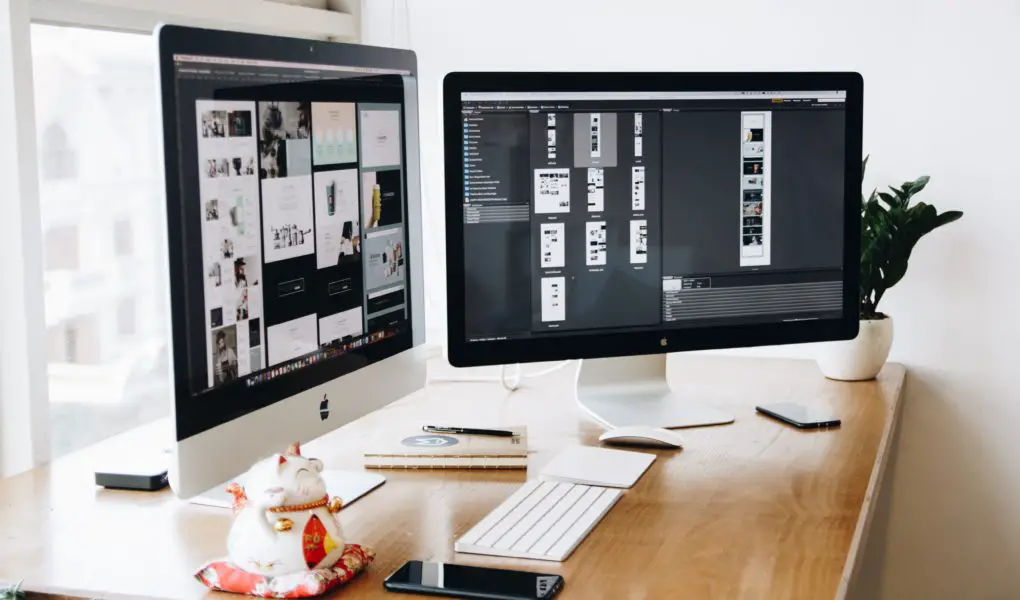The first thing you will need to do after setting up your host for your new WordPress blog is to customise it. There is a number of things you need to set up to customise your blog and make your appearance consistent across all your channels.
Remember that you can always come back to this post, whenever you want to make a re-brand or any other big changes to the appearance and design of your blog.
Disclosure: This post contains affiliate links. This means that if you click on a link marked with [AD] and proceed to make a purchase, we may earn a small commission at no extra cost to you.
Defining your blog’s identity
Before getting into further details about the look of your blog. It is important to define your blog (or brand) identity. These are:
- the name of your blog/website,
- your tagline,
- your logo,
- the icon to be used by browsers,
- your colours, and
- your fonts.
Name and Tagline
You should already have the name of your blog, so spend some time thinking about a tagline. Having a tagline is not required but it is useful for other people to understand what you are doing and what you stand for. It could be very similar to your mission statement too. For example, our tagline is “The complete resource library for your blog” as it aligns with our mission to help bloggers by pointing them to the right resources.
Logo and Website Icon
The next part is to design your logo and the small icon that appears next to your name when you open a tab on a browser. These two don’t necessarily need to be different, but the smaller icon should be something simple that can help people identify your site.
There are many tools that you can use to create your logo, and your blog graphics, in general. A free tool that is easy to use even if you don’t have previous graphic design experience is Canva [AD]. Canva is an easy to use graphic design tool with many templates to get inspiration, as well as premium, add ons and collaboration options.
Of course, if you are not feeling very confident with your graphic design skills, you can leave your logo creation to an expert. You can find many people to work with on Fiverr [AD] and Upwork [AD].
Fonts and Colours
Finally, you should consider the colours and fonts you will use around your website. These are good to align with your logo and other graphics you will need to create in the future, to allow people to easily recognise you.
Once you have defined these, note them down (for colours use hex codes, e.g #FF0000). This will allow you to easily find them again and use them consistently.
In general, it is recommended that you have a primary colour, a secondary colour and a couple of supportive colours. You can look online for colour palettes to get some inspiration.
Similarly to colours, you should have a primary font for your text that is easy to read and a secondary font for your headings.
Remember to not use too many fonts and colours on the same page as it can be tiring for your readers.
Note that it’s ok to use different fonts for your graphics and for your text on your blog, as in many cases, some fonts are not available across platforms.

Theme and Customisation
Once you open your WordPress dashboard for the first time, you will be prompted to choose a theme for your website. Usually, there will be some questions that you can answer, which help WordPress understand what is the purpose of your site and recommend some themes to you.
What is a theme?
In simple terms, a theme defines how your website looks. A theme controls the fonts, the colours, the layout of your pages and posts and more. Remember to select your theme fonts and colours, based on your brand identity.
WordPress allows you to customise a theme template and bespoke it to your needs. The level of customisation possible depends on each theme. For example, some themes allow you to change only basic things such as font colour and size, while others allow you to play with more features such as the look of sidebars, menus and social media buttons.
There are two types of themes: free and premium. The obvious difference between the two is price. The level of customisation and support available are other factors that differentiate them. Lastly, many people suggest having a premium theme, as fewer people choose to pay for one and hence it may be more difficult to stumble upon a site that looks exactly like yours.
However, in my opinion, the priority should be the level of customisation available. If a theme (either premium or free) does not allow you to do many alterations, you still run the risk of using the same theme as someone else. By using highly customisable themes you can easily distinguish yourself from others that may be using the same theme.
Choosing your theme
The way that you can see if a theme is customisable or not, is to use the WordPress filters. Play around with them and see what you want to control. Sometimes, it may not be clear from the theme description, what you can change, so you will need to download and activate a theme, before being able to see what you can do with it.
Another thing you should look for is the number of downloads per day. Understandably, by using a theme with many downloads it becomes more difficult to create a unique website. On the other side, choosing a theme with very few downloads may cause some alarms too. Why aren’t people using it? Are there any negative comments? Does it allow too little customisations? Is the support poor?
Overall, you should try to find the right balance between the features you want and their popularity. WordPress default themes tend to be very popular because every site needs to have one by default (even if you are not using it as your primary theme). You can identify default themes by their name, as they tend to use the current year (e.g Twenty-Twenty theme).
Remember, if you find a theme that looks perfect for you but doesn’t match the ideal description I gave above, it’s ok. Go with it. In the beginning, it is more important to find something you like, you can always change your theme later.

Customising your theme
When you activate a theme, you then have the option to customise it. A special interface will come on your screen which allows you to play with the settings of your theme. Any changes you make will not become public unless you choose so.
Play around and see what looks good. You may want to experiment with a few themes before deciding which one is best for you. Don’t forget to set your website identity that you defined earlier to have a better view of how a theme will look like. Note that only some themes allow you to upload a logo, but sometimes just the name of your blog will suffice.
While you customise your theme, you can optionally display a screen that will say that your website is under construction. This means that any changes you make will not be visible even after hitting publish. This will allow you to experiment on your page without anyone noticing it. There are plugins that allow you to do that, like Under Construction.
Tip: Once you decide on a theme, go on and delete any other themes you may have downloaded to try out. Keep only the theme you are using and the default theme that your site was already using. This is good practice for your website health overall.
Optional: Website Builder
Another way to design your website is to use a website builder. A website builder allows you to easily customise your website’s pages using a user-friendly drag and drop interface. It requires zero coding skills and the end result can be very impressive. More sophisticated website builders, even allow you to design your custom website theme.
But (there is always a but, right?) website builders are not always free and even if you find some free ones they may not offer all their features for free. Also, not all website builders may be compatible with your chosen CMS. So, if you aim to use a website builder for ease of use, you may want to rethink your CMS choice. Wix and Squarespace [AD] are some good examples outside of WordPress, while within WordPress you can use Elementor or Beaver Builder [AD].
In my opinion, if you just started with WordPress, I suggest you spend time familiarizing yourself with the already existing features of the platform. Then, if you find yourself wanting to create a specific type of page (e.g. a landing page to sell a product) and your existing theme does not allow you to do that, you can install a website builder to help you create that page.
Conclusion
Follow the How to Start a Blog: A Step by Step Guide to see what the next steps to your blog creation journey are.
Save this post for later!





